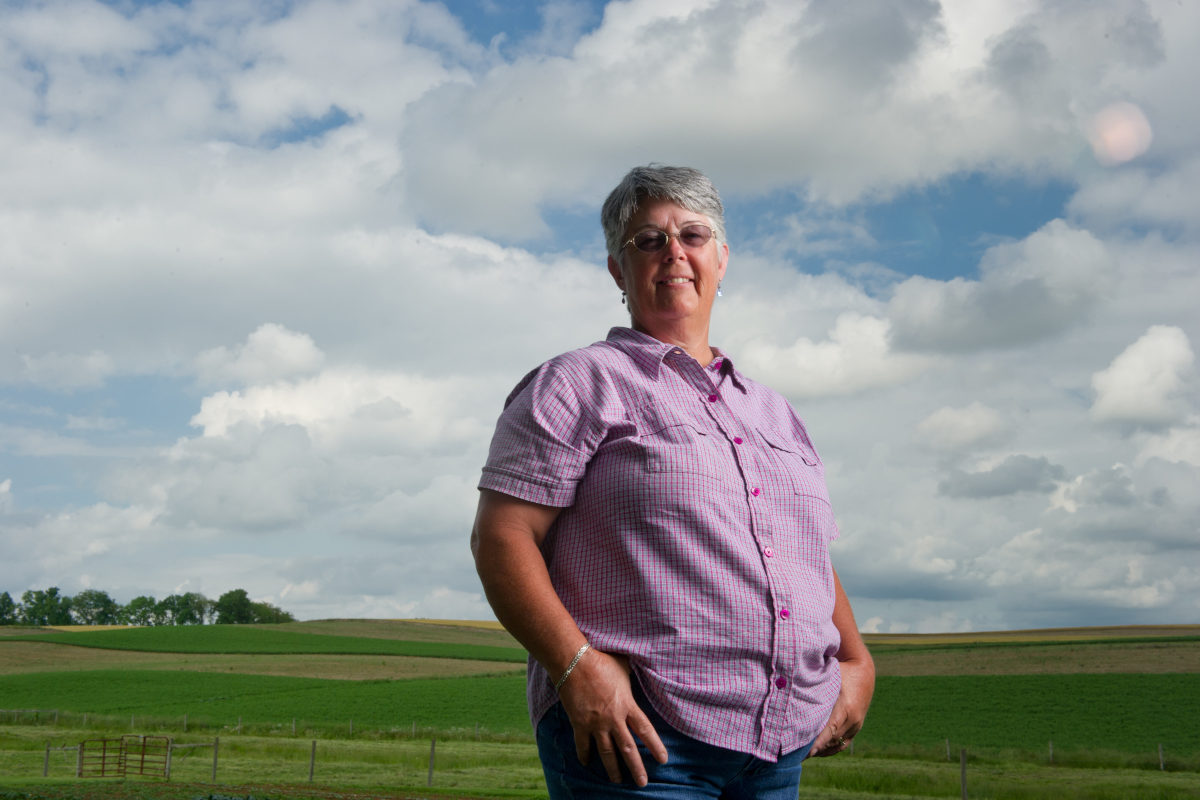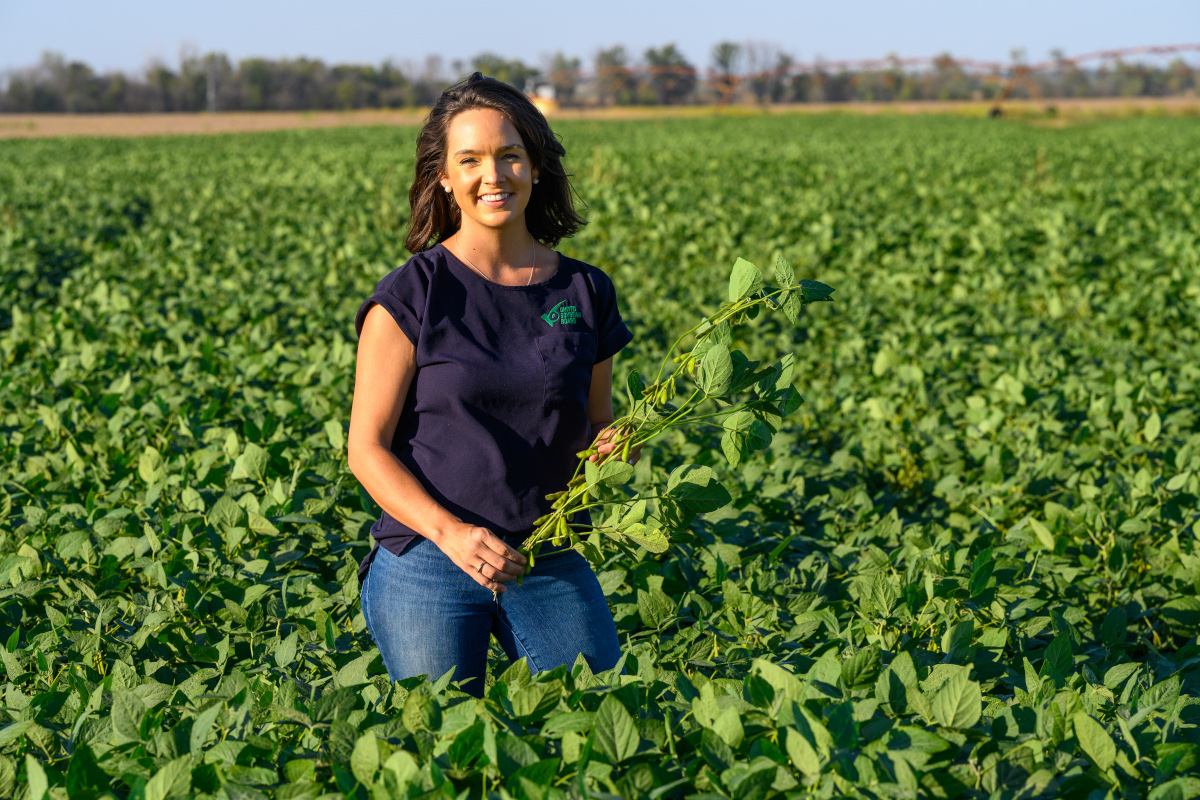From Fifty Acres to Full Fields: High Oleic Grows Demand and Profits

It was 2014. Belinda Burrier was in her first year as a farmer-leader with the soy checkoff when she was presented with an opportunity to grow high oleic soybeans on her farm in north-central Maryland.
She decided to take a chance. And she hasn’t looked back.
“We planted 50 acres to start with, and they performed just as well as our commodity beans, so we knew it was something we wanted to keep in our seed program,” Burrier says.
High oleic soybeans grow the same in the field but produce a higher amount of monounsaturated fat than commodity soybeans. The innovative beans provide extended fry life, a neutral flavor profile and other useful traits for food. High oleic soybean oil also offers top-tier performance for industrial applications such as asphalt, shoes and motor oil.
“My husband and I were just talking about our seed plan for next year,” Burrier says. “We usually start really planning for the next year as soon as the beans from this year are out of the ground.”
Like many other farmers, Burrier and her husband, who farm together, are watching their beans throughout the season. High oleic soybeans check all the boxes year after year.
“The reason why it’s good for us is that there’s no difference in the growing conditions there, the seeds are placed exactly the same into the fields, and management as far as fertilizer or pesticide application is exactly the same,” Burrier says. “We now dedicate 100% of our acres to high oleic soybeans.”
There are only a few differences for farmers growing high oleic. The soybeans need to be stored separately, your equipment needs to be cleaned out before moving between fields and you get a little extra on your paycheck from a premium.
“For farmers, it adds to our bottom line,” she says. “It’s a way to add more value to our crops.”
Through her role with the checkoff over the last seven years, Burrier has seen the demand for these soybeans grow as the checkoff has continued to invest in them.
“The checkoff has grown demand for high oleic here in the U.S. so our customers don’t have to go elsewhere. We can provide what they’re looking for and grow our demand,” Burrier adds.
These specialty soybeans currently have select availability across the Midwest and Delmarva Peninsula. Farmers can work with a multitude of delivery locations available and earn an average premium of 75 cents to $1.25 per bushel. A recent study1 indicated if high oleic growth continues as projected, a 1,000-acre soybean farmer will net between $34,000 and $50,000 more from soybean farming as a result of higher prices driven by high oleic demand.
“Everyone has different growing conditions, and high oleic might not be available for every farmer yet. But I encourage farmers, regardless of where they are in the U.S., to continually check with their seed dealer about these beans. You won’t regret it,” says Burrier.
Calculate your premium and see if high oleic is ready for your field here.
1 Estimated per farmer projected revenue: QUALISOY, “High Oleic Soybean Oil Demand Pull Stimulus Concept,” allocation request. (Not published.)



